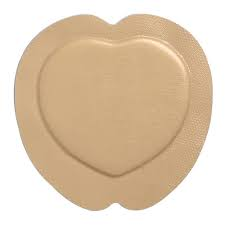Thanks to Dr. Robledo for an excellent review of AUD and AWS at Grand Rounds this week. A link to a recording of the presentation is HERE.
Note: in place of male/female to discuss gender differences, Doctor Robledo used "assigned female at birth" (AFAB) and "assigned male at birth" (AMAB). These abbreviations are included in this summary.
Alcohol use
Appropriate alcohol use is considered no more than 1 standard drink/day (=7/week) for AFAB, 2/day (=14/week) for AMAB. Risky alcohol use is anything more than this amount.
Risky alcohol use is drinking that can lead to health consequences and may develop into alcohol use disorder.
Alcohol use disorder is a pattern of drinking that significantly impairs health and functioning.
Binge drinking: drinking in a way that increases blood alcohol level >0.08 in 2 hours, generally >4 drinks at once for AFAB, >5 drinks at once for AMAB
- mild 2-3 symptoms
- moderate 4-5 symptoms
- severe >6 symptoms
- early remission: abstinent between 3-12 months
- sustained remission: abstinent >12 months
- SASQ: "How often in the past year have you had >4 drinks at one time (if AFAB), >5 drinks at home time (if AMAB)
- AUDIT-C: 3 questions, screening for at risk drinking (if +, should be followed by AUDIT-10)
- ADUIT-10: 10 questions
- CAGE questions: Cut down, Annoyed, Guilty, Eye opener (more looking at alcohol dependency)
 |
| https://www.aafp.org/afp/2013/1101/p596.html |
- be empathetic and caring
- state the medical findings in a non-judgemental way (e.g. signs of cirrhosis on exam, lab results, symptoms)
- educate patients regarding AUD
- advise patients to cut down/stop drinking
- assess their stage of change/readiness for change
- regular follow-up
 |
| https://www.clinicaladvisor.com/home/topics/psychiatry-information-center/alcohol-withdrawal-individualized-care-and-pharmacologic-treatment/ |
80% of patients will have totally uncomplicated withdrawal and do not need to be hospitalized
- PAWWS score available here
- CIWA-Ar score
- mild (<8 just need rest and hydration, 8-10 may need some PRN meds)
- moderate 10-18 should receive standing meds iwth a taper
- severe/complicated: >19, to hospital for monitored withdrwawa
- SAWS score: patient self-assessment (mild <12, severe >12)
- Level 1: CIWA<10, SAWS <12: supportive care, prn gabapentin, carbamazepine
- Level 2: CIWA 10-18, SAWS>12: close follow-up (daily in person, daily video), benzodiazepine (chlordiazepoxide vs. valium/lorazepam) in fixed vs. PRN dosing
- For more information on specific drug dosing, you can refer to this paper in AAFP from 2016https://www.aafp.org/afp/2013/1101/p589.html
- daily visits x at least 5 days
- education
- low stimulation home environment
- fluids
- 400mcg folic acid, 100mg Thiamine x 3 days

















